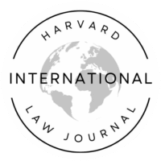Editor’s Note: This article is part of a collaboration between the Harvard Art Law Organization and the Harvard International Law Journal.
CHEN Jun* and Danny Friedmann**
Sacred art is imperative for the sustainability of a collective identity. Its protection via both intellectual property and cultural heritage rights is not well aligned to this objective. This article uses the Balinese Sanghyang Dedari as a case study to demonstrate how elements of this sacred trance dance were transformed by a German and an Indonesian into the secular Kecak dance in the 1930s, which is presented and perceived, incorrectly, as the quintessential traditional Balinese dance, protectable via cultural heritage rights.
The sacred dance Sanghyang Dedari has been passed from generation to generation. It is thought to predate Hindu influences on the island. The dance can only be performed within the confines of the temple. Its function is to mediate between gods and humans (Stepputat). The dancers include two prepubescent girls who enter a trance state, embodying spiritual entities to ward off negative forces and epidemics. Walter Spies, a German painter and musician who arrived in Bali in 1927, witnessed the trance dance. He and his local partner, Wayan Limbak, adopted some musical and dance elements, namely the male chant and some pengecak movements (body and hand movements while seated in a circular formation), based the storyline on the Hindu epic Ramayana, and provided the choreography to make it into a dramatic spectacle, accessible for mainly Western tourists (Stepputat).
The Kecak dance, performed in the Gianyar region of Bali (Stepputat), gained worldwide fame. The spectacle is largely linked to Spies’s knowledge of both the Western gazer and the observed “Other.”11 See generally Edward W. Said, Orientalism (Penguin Classics ed. 2003). Similar to a chef who creates an “exotic” dish with some traditional ingredients but catered to the specific tastes that his clients are acquainted with, it serves exoticism with some familiarity. However, the audience is in awe and regards it as an authentic spiritual dance. In 2021, the Kecak dance was performed by twenty-five cak groups on secular performance stages. Lim points out the commercial and Orientalist transformation of Spies’s Kecak dance (Lim), especially with the increased number of half-naked men and emphasis on sensual scenes, which signifies Bali as the “Other” and a sexual subject to be gazed at.
John Dewey, who defined art as experience,22 See generally John Dewey, Art as Experience (1934). believed that the creation and appreciation of art are integrated with how we perceive ourselves and deal with the world around us. Artists often need to anchor themselves in the process of creation. Before expressing themselves, they need to deeply explore elements that may reflect themselves or the group. To convey such content to others through the language of art, one must incorporate these elements into their artistic creation. By doing so, they can, to some extent, recreate an experience—whether visual, auditory, or tactile—and ultimately forge a meaningful connection with others. According to Dewey’s theory, such connections possess a transformative power (Goldblatt).
Spies, as a well-cultivated artist from Europe, before producing any form of cultural representation of Bali, needed to establish his own perception of the originals, imagine himself as an audience, and then create a cultural expression for the gazer. This is to see the “Other” via a gazer’s eye, which we call a double-Orientalism cultural representation. However, both the Balinese and outsiders gain the sacred spiritual Bali experience via this representation. Some will eventually internalize it as part of the elements that construct their identity, which is neither constructive nor preferable from a cultural heritage preservation perspective.
How to protect sacred works? Artistic works that have been passed on from generation to generation are by definition not independently created and thus not original. Internationally, originality is the standard prerequisite of copyright eligibility. Since Bali was part of the Dutch East Indies, and the Dutch Authors Law of 1912 was applied by extension, the work had to reflect the author’s personal stamp or individuality (Van Dale v. Romme). One can argue that Spies’s and Limbak’s choreography of the Kecak dance could have been protected under copyright law to the extent that it differs from Sanghyang Dedari. However, they did not claim copyright. The applicable Dutch Authors Law 1912, which is still valid, protects the author’s right for seventy years after the death of the author. Spies, who was arrested and charged with sexual acts with a minor (Green), was released from prison in 1939 and soon after imprisoned for being German. Spies died in 1942 when the merchant ship SS Van Imhoff on which he was being deported was hit by a Japanese bomb. His co-choreographer died in 2003 at 106 (LA Times). Thus, theoretically, they could have protected the choreographic work under copyright law until 2073.
In 1971, Balinese scholars convened to prevent the unchecked exploitation of Balinese culture and established a classification system for Balinese dances, dividing them into three categories: tari wali (sacred dances), tari bebali (ceremonial or ritual dances), and tari balibalihan (secular dances) (Stepputat). Tari wali cannot be performed outside of their ritual context (Stepputat).
Even though the Sanghyang Dedari and Kecak dances are ontologically different, they are both regarded as customs, rituals, traditional knowledge and arts, and fall under Indonesia’s Law No. 5 of 2017 on Cultural Advancement.
The utilitarian objective of copyright law in the United States is to provide a temporary monopoly as an incentive to authors to create more expressive works (U.S. Constitution). In other words, the objective of copyright law is to create a giant warehouse of works, as Professor Litman called it. After the copyright period expires, the work ascends to the public domain. Communities that have created sacred works that are crucial for the survival of their collective identity want to shield people outside their community from experiencing the work. Therefore, copyright protection, which ultimately aims to add each work to the public domain, is a bad fit for the protection of sacred works. At first sight, trade secrets seem a better match. However, the two prerequisites of trade secrets, to maintain secrecy and commercial value due to secrecy, are also problematic. It is difficult for communities to keep these works secret in the exercise of their traditions and rituals, and the works have a spiritual value that cannot be monetarily expressed.
In addition to the utilitarian justification of copyright law, there are Locke’s labour theory, and Gordon’s application of Locke’s labour theory, as well as Hegel’s personality theory, and Radin’s application of Hegel’s personality theory. Under these doctrines, the link between the author and the work is emphasized. Because of the intergenerational character of Traditional Cultural Expressions (TCEs), this link is often strongly diluted. However, in the best case scenario, each generation builds upon the work, updates it to the contemporary context, and ensures its relevance and vitality. Since copyright is individualistic, and the concept of joint authors is only reluctantly accepted by the courts, TCEs are the better option. This process started in 1967 with the addition of Article 15.4 to the 1967 amendment to the Berne Convention for the Protection of Literary and Artistic Works, which provides a mechanism for the international protection of unpublished and anonymous works. According to the Guide to the Berne Convention of the Paris Act 1971, the aim of this addition at the Stockholm Conference of 1967 was providing international protection of folklore. The term “folklore” was not literally used in the Berne Convention in 1967. The provision was confirmed in the Paris Revision of 1971.
TCEs encompass tangible and intangible cultural heritage, including music, dance, art, designs, names, signs, symbols, performances, ceremonies, architectural forms, handicrafts, and narratives passed from generation to generation.
For TCEs, a certain degree of evolution is possible through cultural practices that reflect contemporary reality depending on how the TCE policy is implemented. With collective stewardship, the community of a sacred work needs to balance authenticity and innovation. However, for most sacred works, stability seems to be more important, and the community of a sacred work might want to keep a certain manifestation of the work secret. Control over their TCEs is of cardinal importance to traditional communities and indigenous peoples. Of course, deciding if someone is part of such a community can be difficult indeed. But these problems of delineation one can find in many fields of law, including geographical indications.
In the United States, moral rights are being protected via the Visual Artists Rights Act of 1990, which is only relevant for a small category of subject matter, and a patchwork of laws that focus directly or incidentally on moral rights for the other subject matter (U.S. Copyright Office). In contrast, Indonesia’s Copyright Law recognizes moral rights under Law No. 28 of 2014 on Copyright. These rights are distinct from economic rights and are granted to creators to protect the personal and reputational connection they have with their works.
Certain copyright frameworks such as communal copyrights (Gebru) and moral rights, the right of integrity and the right of attribution, could be combined with cultural heritage policies to safeguard against exploitation without freezing TCEs in time.
Balinese can still perform the Sanghyang Dedari trance dance or partake in the ritual. The Kecak had partially its origin in this sacred dance, but it never replaced it. The tourists lured with the promise of an authentic Balinese cultural experience are brought under the spell of a relatively modern spectacle. This mirrors the Orientalist view of Balinese culture, which effectively distracts them from the true, spiritually pure trance dance: a decoy to shield the prize. However, without effective legal protection of the TCE, the threat is that the popular Kecak dance will eventually overshadow the Sanghyang Dedari.
[hr gap=”1″]
*CHEN Jun is a researcher in the field of culture & tech, he is now a Doctoral candidate at Chinese University of Hong Kong,Faculty of Social Science, researching identity issues, especially via the lens of digital art.His interests on identity issues are strongly attributed to his teaching experience in inner city public schools in Los Angeles. CHEN was trained as a computer engineer at college, received his MA from CUHK in Intercultural Studies, and spent one research year at Universitat Autònoma de Barcelona.CHEN has worked in education, technology and art sectors around the globe, curated exhibitions in mainland China, Hong Kong and Singapore. He has published articles on various topics with journals including Artron, Asia Pacific Law Review, Imaginist, MIND, etc.
**Dr. Danny Friedmann is researcher and associate professor of intellectual property law at Peking University School of Transnational Law in Shenzhen. His monograph is titled “Trademarks and Social Media, Towards Algorithmic Justice” (Edward Elgar Publishing, September 2015). His student-reviewed articles are published with IDEA (and republication with Intellectual Property Law Review in 2024, which is an annual anthology of a selection of 19 articles out of all published U.S. articles), and CWIJ, and his article with NYU JIPEL is forthcoming. Peer-reviewed articles are published by Journal of World Intellectual Property (Taylor & Francis), Journal of Intellectual Property Law and Practice (Oxford University Press), GRUR Int., European Intellectual Property Review, Benelux Trade Marks and Design Rights (BMM) Bulletin, Asia Pacific Law Review, International Journal for the Semiotics of Law – Revue internationale de Sémiotique juridique and Jus Vini. His book chapter on Google and China was quoted by the Advocate General of the Court of Justice of the European Union in C-131/12 Google Spain in 2013.

